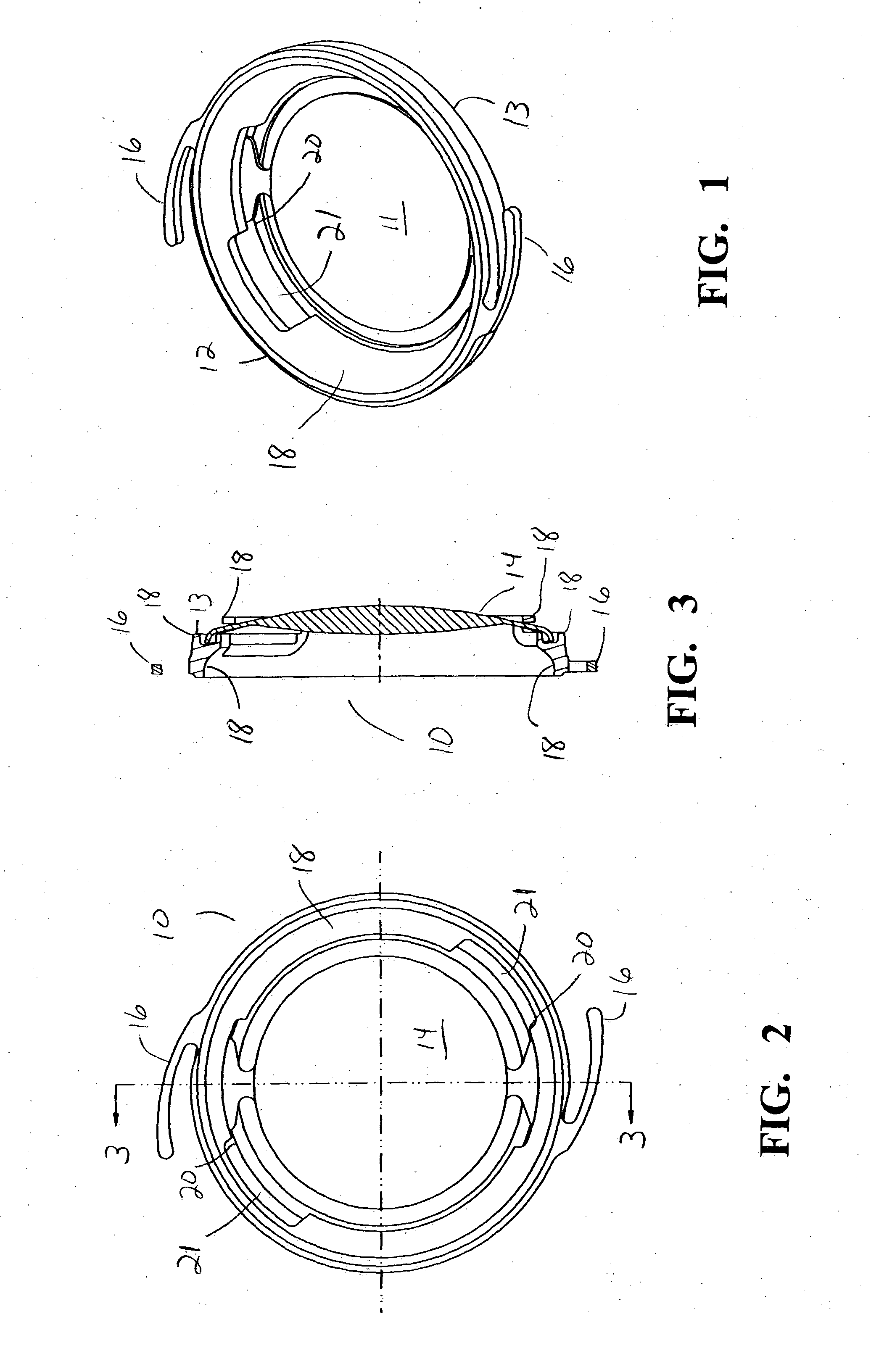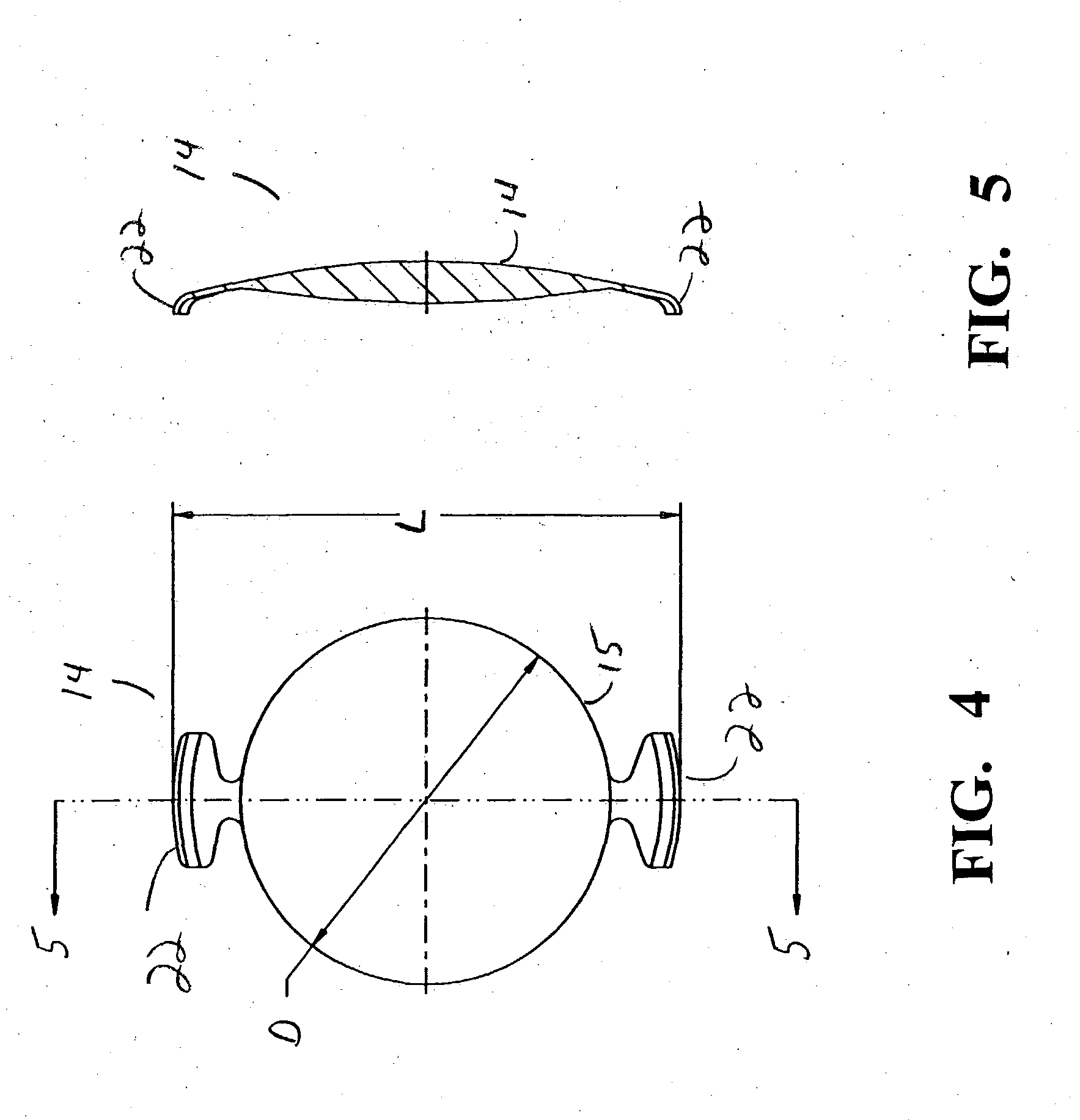Intraocular lens system
- Summary
- Abstract
- Description
- Claims
- Application Information
AI Technical Summary
Benefits of technology
Problems solved by technology
Method used
Image
Examples
Embodiment Construction
[0021] As best seen in FIGS. 1-3, lens system 10 of the present invention generally consists of first, or base, component 12 and second, or optical, component 14. Base component 12 is generally ring-like, having hollow center 11 and contains a plurality of integrally formed haptics 16 and is preferably formed in any suitable overall diameter, for example, between approximately 10.0 millimeters and 12.0 millimeters, a suitable interior diameter, for example, between approximately 7.0 millimeters and 9.0 millimeters and made from a soft, foldable material such as a soft acrylic. Alternatively, base component 12 may be made from a material that is stiffer relative to optical component 14. Preferably, base component 12 is constructed so as to allow it to be compressed and inserted into an eye through an incision of approximately 2.5 mm. Base component 12 may also be formed so as to be opaque, such as by frosting or texturing the anterior and / or posterior surfaces of base component 12. B...
PUM
 Login to View More
Login to View More Abstract
Description
Claims
Application Information
 Login to View More
Login to View More - R&D
- Intellectual Property
- Life Sciences
- Materials
- Tech Scout
- Unparalleled Data Quality
- Higher Quality Content
- 60% Fewer Hallucinations
Browse by: Latest US Patents, China's latest patents, Technical Efficacy Thesaurus, Application Domain, Technology Topic, Popular Technical Reports.
© 2025 PatSnap. All rights reserved.Legal|Privacy policy|Modern Slavery Act Transparency Statement|Sitemap|About US| Contact US: help@patsnap.com



